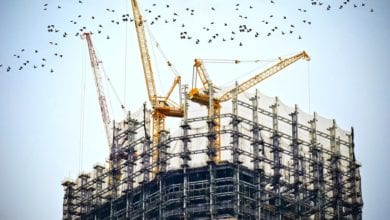How to gain planning permission for your hotel refurbishment
Hotel Owner discovers how to go about gaining planning permission for any refurbishment work you wish to undertake at your hotel

Hotel refurbishments play a pivotal role, not only in maintaining competitiveness but also in enhancing guest experiences and keeping establishments aligned with modern standards. However, the journey towards refurbishing a hotel is far from straightforward; it involves a labyrinth of legal regulations and bureaucratic procedures, with obtaining planning permission standing as a critical milestone.
Understanding planning permission
At the heart of any development project in the UK lies the requirement for planning permission. This formal consent from the local planning authority (LPA) serves as a cornerstone of the regulatory framework, ensuring that proposed developments comply with relevant planning policies and regulations. For hotel refurbishments, obtaining planning permission signifies adherence to specific land use, design standards, environmental considerations, and local development plans.
Several key factors come into play when seeking planning permission for hotel refurbishment projects. The geographical location of the hotel holds significant sway over the planning process. Areas designated as conservation zones or green belts may pose stricter regulations, while urban and rural locales present unique challenges and considerations.
Local planning policies further shape the planning landscape, with each local authority establishing its own set of guidelines and regulations. These policies encompass a wide array of aspects, including land use, building design, density, and environmental safeguards. As such, hotel refurbishments must align with these policies to secure planning permission successfully.
Moreover, historic and conservation considerations can significantly impact refurbishment projects, particularly for hotels housed within historic or listed buildings. Preserving architectural heritage and maintaining the character of these structures are paramount, often necessitating additional permissions and consultations with heritage bodies.
Environmental impact is another crucial consideration in planning decisions. In an era of growing environmental awareness, refurbishment proposals are expected to incorporate sustainable practices, such as energy efficiency measures, waste management strategies, and considerations for biodiversity preservation. In some cases, comprehensive environmental impact assessments may be required to evaluate the project’s ecological footprint.
Community engagement emerges as a pivotal aspect of the planning process, especially for larger refurbishment projects. Consultation exercises provide an avenue for local communities and stakeholders to voice their concerns, provide feedback, and shape the outcome of planning decisions. Positive community relations can greatly influence the success of planning applications and foster support for refurbishment initiatives.
Step-by-step guide to obtaining planning permission
Securing planning permission for hotel refurbishment projects involves a systematic and multifaceted approach, encompassing several key stages.
The pre-application stage sets the foundation for the planning process. Feasibility studies are conducted to assess the viability of the refurbishment project, considering factors such as market demand, economic feasibility, and potential challenges. Pre-application meetings with planning officers provide an opportunity to seek guidance, clarify requirements, and address any initial concerns.
Subsequently, the preparation of the planning application entails developing detailed architectural plans and drawings that comply with regulatory standards and local planning policies. Supporting documents, such as Design and Access Statements, Heritage Statements, and Environmental Impact Assessments, are compiled to provide a comprehensive overview of the proposed refurbishment and its potential implications.
Financial projections are also an integral component of the planning application, outlining the investment required for the refurbishment project, expected returns, and economic benefits to the local area. These projections serve to substantiate the project’s viability and economic contribution, reinforcing the rationale for seeking planning permission.
Once the planning application is prepared, it is submitted to the local planning authority for review. This involves completing application forms, submitting required documentation, and paying applicable planning fees. The application undergoes a validation process to ensure that all necessary information is provided and that the submission is in compliance with regulatory requirements.
The assessment and review process commences with a thorough examination of the planning application by the local planning authority. This includes technical reviews by planning officers, who assess the proposal against relevant planning policies and considerations, such as land use, design, heritage impact, and environmental sustainability.
Public consultation may also be conducted, allowing members of the community to provide feedback and raise any concerns they may have regarding the proposed refurbishment. This consultation process provides valuable insights and enables the planning authority to consider the broader implications of the project on the local community.
Negotiations and amendments may be necessary during the review process to address any concerns or objections raised by planning officers or members of the community. This iterative process may involve refining the proposal, modifying design elements, or mitigating potential impacts to secure planning approval.
The decision-making stage culminates in a determination by the planning authority, either through a planning committee or delegated officer decision. Planning committees convene public meetings to discuss the proposal, consider officer recommendations, and make decisions based on planning merits and policy compliance. Alternatively, planning officers may be delegated the authority to make decisions on behalf of the planning authority, following a thorough assessment of the proposal and consultation responses.
Upon approval of the planning application, the applicant receives a formal decision notice outlining any conditions attached to the permission. Compliance with these conditions is mandatory for proceeding with the refurbishment works. In cases where planning permission is refused or unfavourable conditions are imposed, applicants have the right to lodge an appeal with the Planning Inspectorate.
Post-decision stage
Following the granting of planning permission, the implementation phase commences, wherein the refurbishment project is executed in accordance with the approved plans and conditions. This may involve obtaining additional consents or permits, such as building regulations approval or listed building consent, where applicable.
Throughout the implementation phase, ongoing engagement with stakeholders, including local communities, contractors, and regulatory authorities, is crucial to ensuring that the refurbishment proceeds smoothly and in compliance with regulatory requirements. Regular communication, transparency, and responsiveness to feedback are key to maintaining positive relations and addressing any issues that may arise during the construction process.









